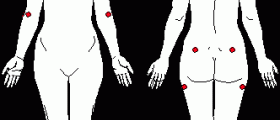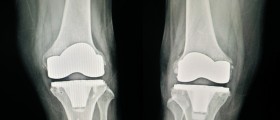Introduction
Piriformis syndrome is a neuromuscular disorder. It features with the pain and numbness in the buttocks due to compression or irritation of the sciatic nerve. The pain in piriformis syndrome tends to irradiate towards the thigh and down the whole length of the leg. This syndrome may result from excessive strain and there are also other possible causes.
The condition is initially treated with certain medications and with the assistance of physical therapy. However, if the results of these two therapies are not satisfying one may even have to undergo surgery.

Surgery for Piriformis Syndrome
In case that patient needs to be operated there are three surgical procedures. The first one is cutting of the piriformis tendon. The second one is cutting through the piriformis muscle. The last option is rather new and not so invasive procedure.
The First Surgical OptionThe first surgical approach is performed under general anesthesia. The patient needs to be hospitalized for only a day. The incision line of approximately three inches is made in the buttocks area and then the surgeon splits the fibers of the gluteus maximus muscle so that he/ she can reach the piriformis muscle. Finally, tendon of piriformis muscle is cut.
The Second Surgical OptionIn case that cutting of the piriformis tendon will not result in adequate pain relief, the surgeon will perform other operation. Namely, even this surgical procedure is done under general anesthesia. The beginning of the operation is similar to the previously mentioned surgical approach. In this case the surgeon will achieve the desirable effect by cutting through the piriformis muscle. He/ she will also remove small parts of the piriformis muscle.
Minimally Invasive SurgeryThis is the third surgical approach in case of piriformis syndrome. Patients are administered local anesthetics. The first step includes the MRI-guided injection of Celestone® and Marcaine®. Celestone® belongs to corticosteroids and Marcaine® is an anesthetic. This therapy is highly effective in case of piriformis syndrome.
- Of the 12 patients undergoing surgical resection of the piriformis muscle, neurolysis was performed in 2 patients due to a severely adherent or scarred sciatic nerve.
- Engorged epineurial vessels around the sciatic nerve shrank spontaneously after resection of the piriformis muscle.
- A hypertrophic trochanteric bursa was excised in 3 patients. The average length of the skin incision was 9.5 cm, and the average amount of postoperative bleeding was 24.5 mL.
- There were no postoperative complications including hematoma, infection, delayed wound healing, scar formation, and myositis ossificans. The average duration of hospitalization was 5.3 days (range, 3 to 9 days).
- Compared with preoperatively (mean visual analog scale (VAS) score, 9), the VAS scores significantly decreased both immediately after surgery (mean VAS score, 4) and at the 12-month follow-up (mean VAS score, 3.1).
- Sciatica was almost resolved in 9 patients within 3 postoperative days. Persistent buttock pain after surgery was present in 3 patients. Among them, 1 patient had symptom relief after 12 months.
The Outcome and Results of the Surgery
The patients need to undergo physical therapy after the surgery. Physical therapy lasts approximately six weeks. Apart from that in certain cases ice or heat therapy, massage or electrical stimulation may be conducted. It is most important that the patient learns how to move safely so that he/ she can avoid repeated injury of this area.
Special exercises are conducted to strengthen the back muscles. After proper rehabilitation a patient may return to every day activities. He/ she is recommended to restrain from lifting heavy objects and to do other activities that place extra strain onto the lower part of the back.

















Your thoughts on this
Loading...